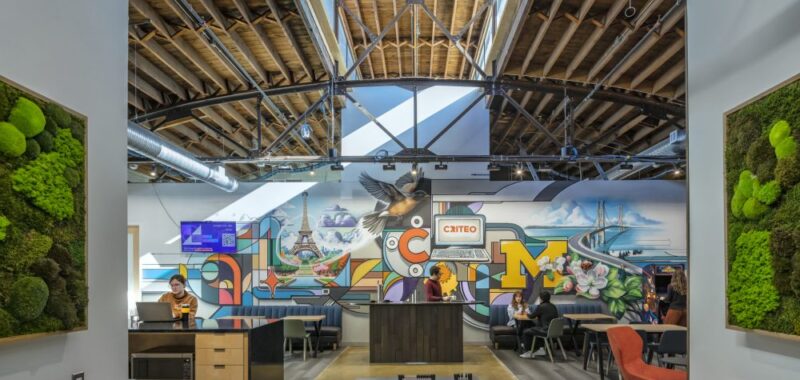SmithGroup‘s Madeline Dunsmore explains how gamification will drive Gen Alpha’s work expectations, and what that means for workplace design.
For Gen Alpha, our youngest generation (born 2010-2024), the use of technology to learn and play has been integral to their upbringing. Video games in particular, have shaped how kids’ brains develop. With nine out of ten children in America playing video games, these digital experiences have taught them how to read, solve problems, and make connections with others. Gaming is foundational to how they approach problems, learn new skills and feel confident in their abilities. Applying gaming elements to workplace design will make those spaces more attractive, motivating and engaging to Gen Alpha when they enter the workforce in 2030.
Gamification in Design
What is gamification? Harvard Business Review explains that “gamification takes the essence of games — fun, play, rules, uncertainty, and challenge — and applies it to non-game contexts.” Many programs use gaming elements such as: points, goals, badges, and leaderboards to encourage participation. Story and character are also common elements that keep players emotionally invested and progressing. Games can be played on your own, against others, or cooperatively. When we apply these concepts to workplace design, the results are spaces that invite the user to interact with an environment that responds to their actions.
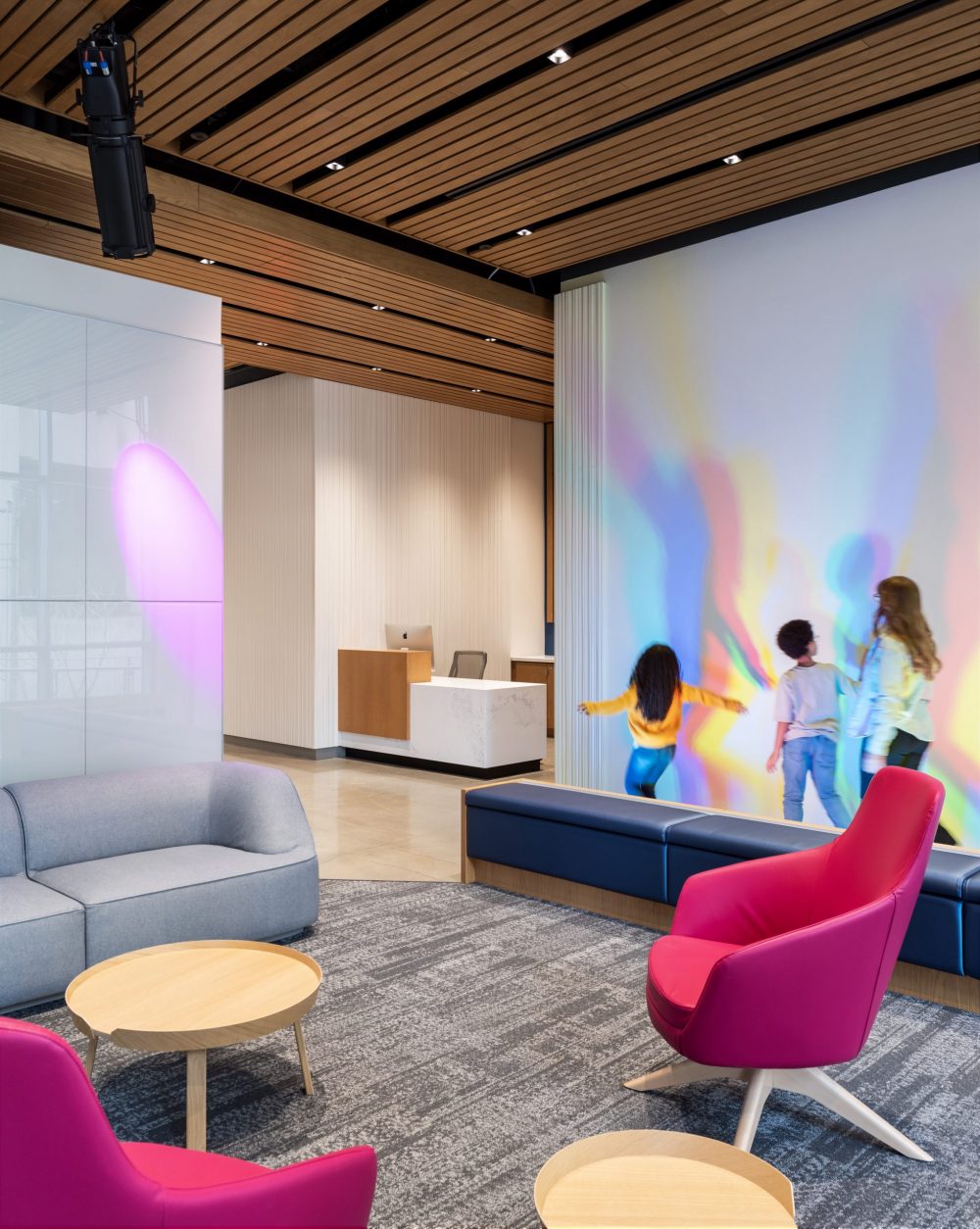
Gamifying the Goal
Goal: Drive more cross-functional collaboration.
Gamify: Every time a person visits a new department, floor, or building award them with a badge (real or digital) that symbolizes that place or department. Therefore, each neighborhood, floor or building will need a more individualized look and feel that matches the badge – to encourage employees to embark on quests to new places to meet new people. For extra fun add a new monthly surprise in each location – maybe a coffee flavor or treat.
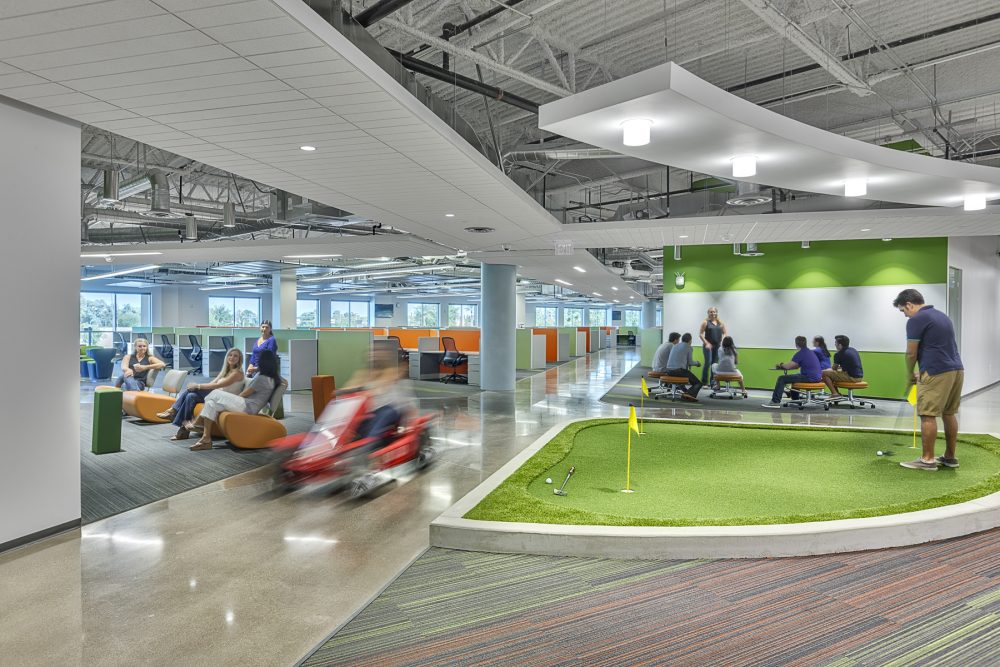
Goal: Upskill your workforce by encouraging training and applying knowledge.
Gamify: Incorporate digital leaderboards that display ranking of teams who have collectively completed the most training courses, or show avatars of team members with recently earned certifications (new power unlocked!) or showcase how an associate applied a new skill in an inventive and creative way. Having shoutouts and micro-recognition interwoven visually throughout the space can help gamify learning and development.

Goal: Reinforce culture and the organizational story.
Gamify: Much like a scoreboard tells you what’s happening during a sports match, you can leverage digital dashboards to communicate recent team/company wins, quarterly goals, charitable giving, or wellness initiatives. Or have interactive wall art that reflects the company story that people are encouraged to modify and play with as they pass by.
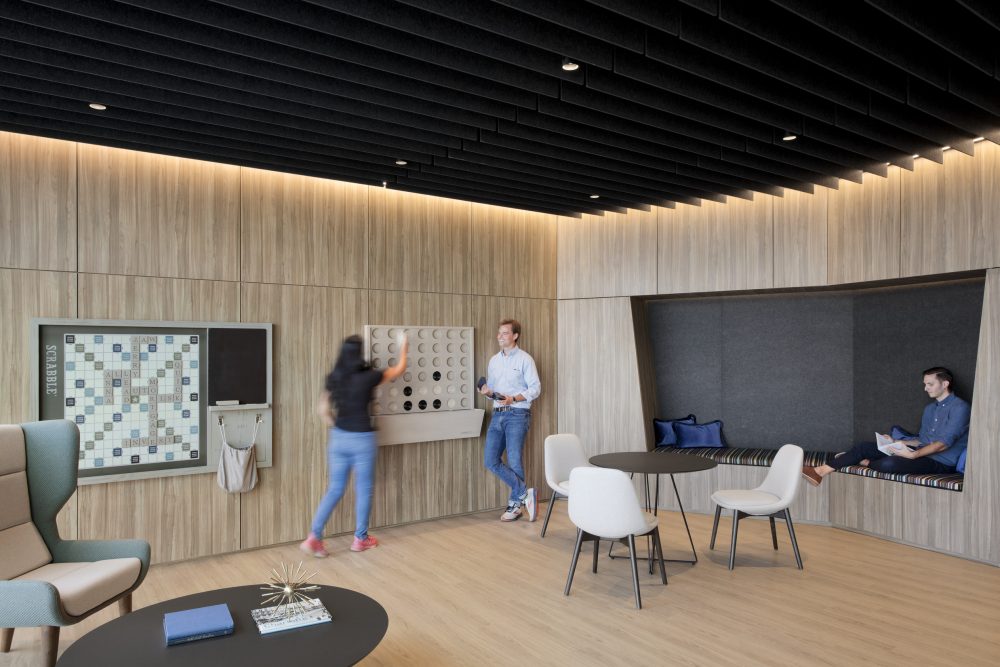
Goal: Enhance and speed up the onboarding process.
Gamify: For onboarding, conduct scavenger hunts, with special places, objects or people that embody the culture. Set up the office more like a video game, with different levels and side quests with QR codes to earn onboarding points.
Learning from Gaming Spaces
Specialty spaces to play games (video games and IRL games) can tell us a lot about Gen Alpha’s preference for an environment where they can both find a productive flow state and a place where they can collaborate to solve problems with others.
Mirror game play environments for deep focus. Video game lounges are optimized for gamers to play together. From low lighting, large personal screens and large centralized screens, gaming chairs and headphones – gamers play together and see others progress.

Key Takeaways for the Gen Alpha Workplace:
- Immersive experience – using video projection, led video surfaces, and immersive audio to augment the workspace in many ways: either a quiet space to promote concentration or use immersive video for client demos, learning, collaboration or tech labs.
- Technology Fluidity – be able to move information from phone, to tablet, to large screen seamlessly at the push of a button. Make sure the audio follows you too. This could require more complex control systems.
- Customizable – every person is different, and they will take the time to set up an environment that works for them. Make sure workspaces have height- adjustable desks, ergonomic chairs, lighting and sound control – even consider personalized temperature and scents.
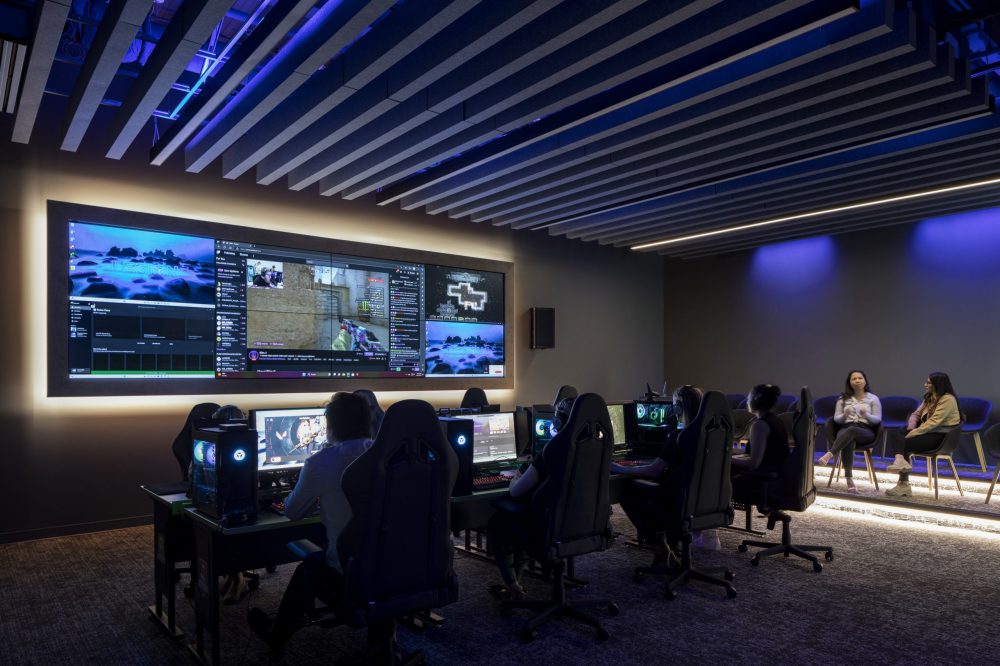
Time to think beyond the game room. Having games in workspaces is not new – i.e. the random ping pong table. But these spaces often go underutilized and take up valuable real estate. Instead try incorporating gamification and gaming environments into the design. It might just be the way to get Gen Alpha to level up.

